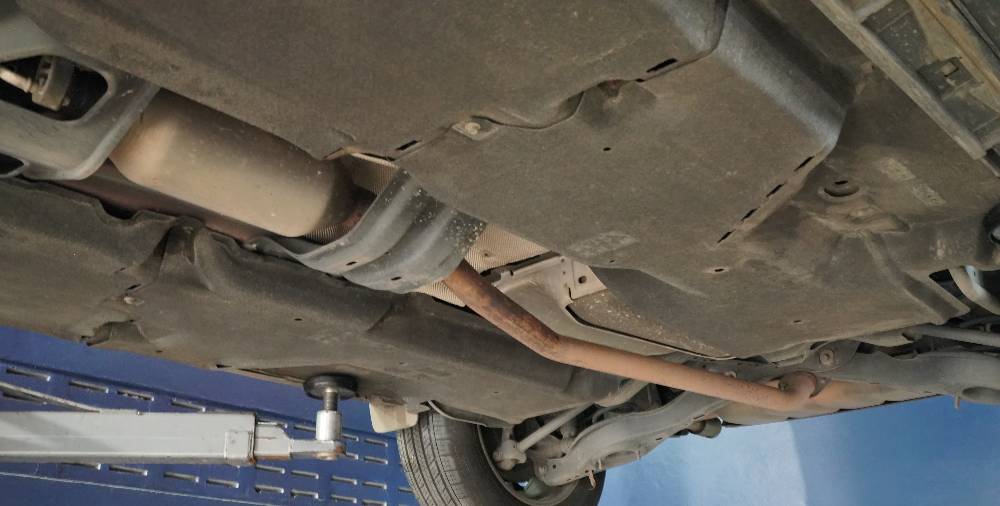Cars consist of many complex parts. Understanding each mechanism of your vehicle requires years of training and experience. However, catalytic converters play an essential role in your car’s emissions, fuel efficiency, and overall health, so maintaining a basic understanding of catalytic convertors proves vital.
Everybody has seen large 18-wheel trucks produce vast clouds of exhaust, but how much of that exhaust harms the environment? A catalytic converter transforms harmful pollutants from your car’s engine into environmentally safe emissions. Since the invention of catalytic convertors, ozone-harming emissions released by vehicles have dropped dramatically. Continue reading to learn more about catalytic converters and how to keep your car running for years.
The History of Catalytic Convertors
Cars did not always abide by environmentally safe practices. In 1963, the United States passed the Clean Air Act to reduce the number of harmful pollutants released from stationary and mobile sources. The U.S. automobile industry boomed in 1963, producing over nine million cars and increasing concern surrounding harmful emissions. The federal government amended the Clean Air Act in 1965 to include the first federal vehicle emissions standards with the National Emissions Standards Act. All cars produced in the United States after 1965 had to meet emissions standards imposed by the federal government.
French mechanical engineer Eugene Houdry invented the catalytic converter in the 1950s to reduce the number of harmful pollutants emitted from smokestacks and gasoline-car engines. The U.S. began mainstream production of catalytic converters in the 1970s to meet the emissions standards set forth by the federal government. Since then, every car produced in the United States has included catalytic converters.
What Is a Catalytic Converter?
Catalytic converters attach to the underside of your car within the exhaust systems between the muffler and exhaust pipe. The catalytic converter consists of a large metal casing, two lines, and a catalyst made from precious metals such as platinum, rhodium, and palladium. The exhaust produced by your car travels through a pipe to the honeycomb-shaped catalyst, where harmful molecules convert to environmentally safe compounds.
For example, without a catalytic converter, harmful molecules produced by your car, such as nitrogen oxide and carbon monoxide, would flow freely into the atmosphere. The precious metals in catalytic converters alter the composition of nitrogen oxide and carbon monoxide into environmentally friendly carbon dioxide and nitrogen molecules. The two main types of catalysts found in cars include:
Reduction Catalysts
The reduction catalyst separates harmful nitrogen oxide elements into separate nitrogen and oxygen molecules—platinum and rhodium bind with oxygen molecules, allowing harmless nitrogen molecules to flow through the exhaust pipe. Leftover oxygen molecules help to decrease harmful emissions further through oxidation.
Oxidation Catalysts
Oxidation catalysts burn harmful hydrocarbons and carbon monoxide to form individual oxygen molecules. Platinum and palladium use freed oxygen from the reduction catalysts to bind additional oxygen molecules to carbon monoxide and hydrocarbons, creating harmless carbon dioxide and water.
The catalytic converter represents an essential emission control device in cars. Without catalytic convertors, dangerous hydrocarbons and nitrogen oxide molecules disrupt the earth’s ozone layer and further contribute to greenhouse gases in the atmosphere.
How To Know Your Catalytic Convertor Is Working
Catalytic converters reduce harmful emissions from vehicles but also improve cars’ fuel efficiency and lifespan. The ECU, the electronic control unit of your car, constantly gathers data from catalytic convertors to ensure the engine captures enough oxygen to complete catalytic conversions and burn fuel efficiently.
Check engine lights may indicate fuel-burning inefficiencies due to damaged catalytic converters. Always seek professional catalytic converter services if your vehicle drives sluggishly, has trouble accelerating, or produces a sulfuric smell of rotten eggs. Catalytic converter replacements cost thousands of dollars, so always bring your car to your local mechanic for annual maintenance.
Because of the precious metals encased in catalytic converters, cars become targeted for catalytic converter theft. To ensure the safety of your vehicle, consider welding your catalytic convertor to the bottom of your car or installing a metal cage to deter thieves. Catalytic converters are essential for your vehicle, so always keep them safe!
Trust Performance Muffler for All Your Catalytic Converter Services
Performance Muffler proudly provides exhaust service and replacement, catalytic convertor services, and cat-back exhaust system repair. Since 2007, Performance Muffler has proudly served the Phoenix, Peoria, and Glendale, AZ, area with friendly customer service and high-quality results. To learn more about our services, contact us at Performance Muffler at (602) 691-6494 to speak with our friendly staff today!

